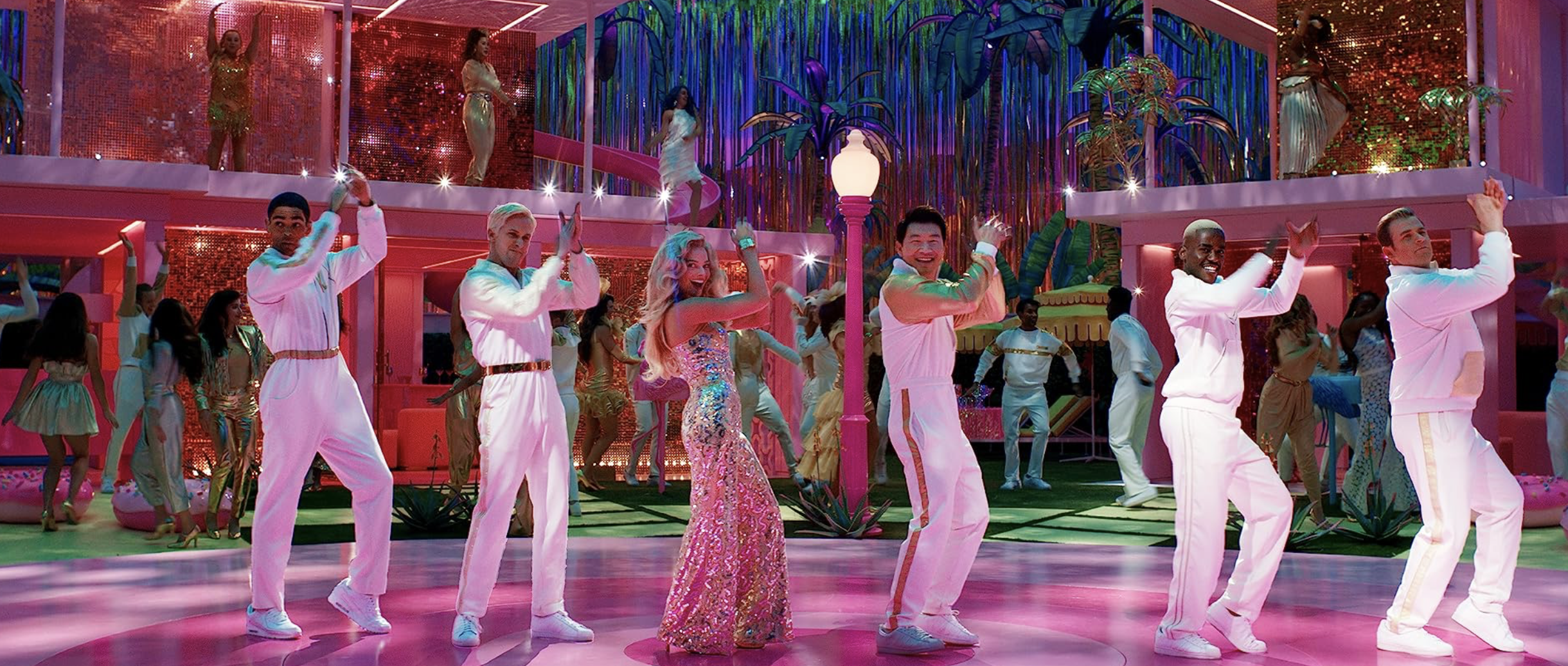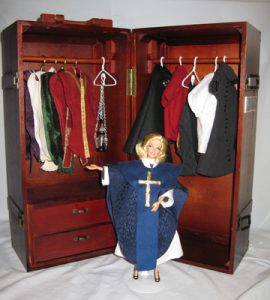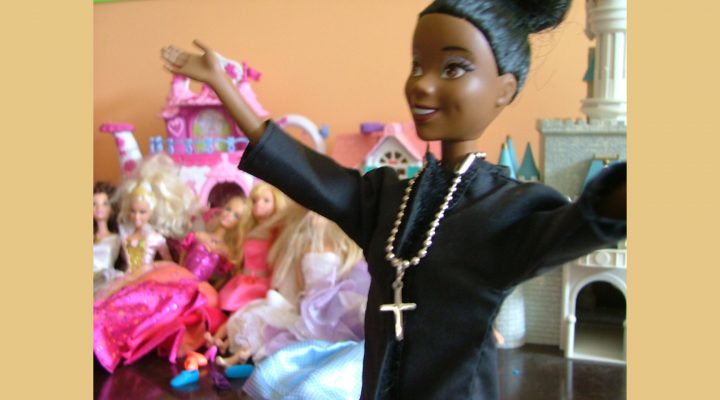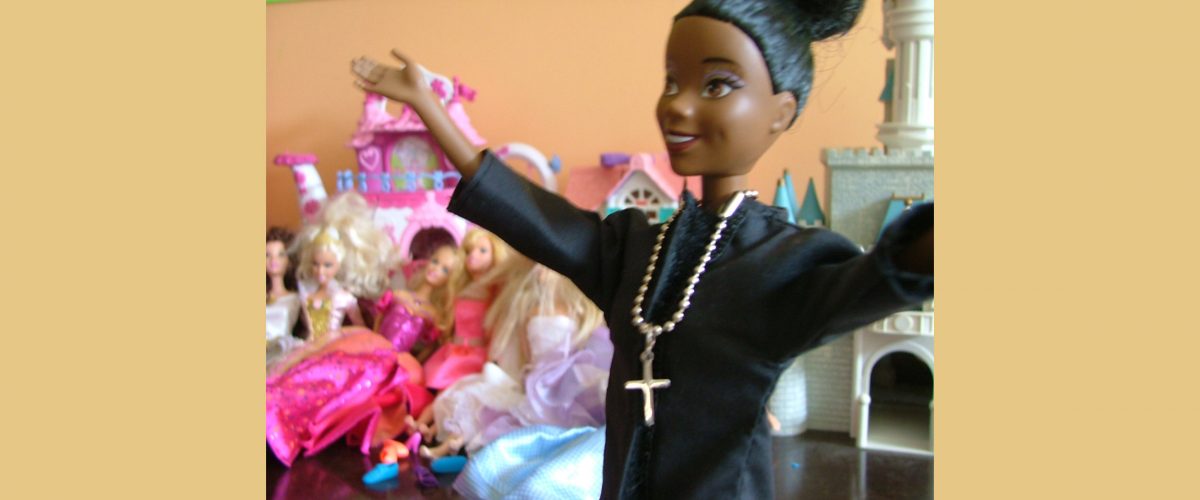Before there was Barbie, there was Lilli.
Lilli originated in 1952 Germany, just a few years after the end of World War II. The doll was introduced as a call girl, a comic-strip character in Bild-Zeitung, the newspaper in Hamburg, Germany. Lilli personified a markedly intelligent, culturally irreverent and sexually uninhibited charisma.
She was so popular that Lilli was soon made into an adult novelty toy targeted as a gag gift for men. The nearly 12-inch-tall doll had voluptuous breasts, a blonde ponytail and perfect makeup, including blue eyeshadow under arched eyebrows and red lipstick on enshrined puckered lips. Owners dangled their Lilli dolls from the rearview mirror, set it on the car dashboard or gifted it to a girlfriend.

Patrick Wilson
Four years later, the Handler family was vacationing in Switzerland when 15-year-old Barbara spotted the Lilli doll. Her mother, Ruth Handler, bought three of the dolls, which Barbara brought home with her to California.
Ruth, along with her husband, Elliot Handler, and business partner Harold “Matt” Matson had formed Mattel (the company name was a combination of Matt and El—short for Elliot.) back in 1945. During World War II, the company struggled making plastic furniture, so they shifted to making toy furniture. By the late 1950s, Ruth had the idea to adapt the German Lilli doll into an American version and named the doll after her daughter Barbara or Barbie for short.
Barbie is born
The very first Barbie doll debuted at the American International Toy Fair in New York on March 9, 1959. It is the original Barbie that is depicted in the opening scene of the 2023 box-office hit movie, Barbie, directed by Greta Gerwig. Donning a black and white one-piece swimsuit, a larger than life-sized Barbie enters the prehistoric scenery to the theme-music of Stanley Kubrick’s 2001: A Space Odyssey.
The appearance of this new doll results in little girls shattering their baby dolls on the rocks as they turn in awe to the Mattel curvy creation. What once was a lustful plaything for men now is the envy of every American girl.
What ensues throughout Gerwig’s movie is an exposure of the destructive elements in the dualistic worlds of Barbieland (where Barbies do everything and Kens are just the tag-along eye candy) to the Real World (where patriarchy reigns).

Something is resonating
Val Fisk, in her fascinating BNG opinion piece, “Can Barbie Help Us Create Justice?,” overviews the themes of the movie and calls for equality. Rick Pidcock in his BNG article, “Why The Patriarchy is Hyperventilating Over Barbie,” does a fabulous job showing the parallels of what the movie exposes about sexism and the challenges that exist in modern American Christianity.
Certainly, there are many layers to what Gerwig is saying in the Barbie movie that will continue to be evaluated and debated for months to come.
The movie is smashing the box-office. In the first week since release (July 19), the movie generated more than $250 million in domestic markets and more than $500 million worldwide.
Gerwig’s film is the biggest domestic opening of 2023 and the biggest opening weekend ever for a film directed by a woman. It is the biggest opening for a movie based on a toy and of any movie that is not a sequel, a remake or superhero movie.
Something in this film is resonating with audiences all across the country and around the world.
Who is watching this movie? Interestingly, Barbie opened at the same time as Oppenheimer, a movie about the atomic bomb. The two films have created such a stir that many across the country are going to see both of them or gender-dividing to see the two films at the same time. This phenomenon is being called “Barbenheimer.”
According to The Wrap, audiences for the two films are almost mirror images of each other. Barbie moviegoers are 66.2% female and significantly younger (74.6% being under the age of 29), whereas the Oppenheimer movie is drawing 70.7% male viewers and 52.9% are over 30. People are going to see one or both of these movies, drawing huge crowds to the theater during a time of labor disputes among the actors’ and writers’ guilds.
“The success of the Barbie movie among younger generations of women is significant.”
As these statistics pertain to the Barbie movie, it is of sociological interest that there is such a large audience among younger women, teens and children. Compare this with the recent box-office success of the Super Mario Bros movie, which reported to reach a 59% male audience with only 16% being 12 years old and under. The success of the Barbie movie among younger generations of women is significant.
A powerful speech
Take just this one example. At the climax of the movie’s action, America Ferrera (the actress characterized as the woman in the Real World who played with Barbie) gives this powerful monologue not just to the other actors on the screen but to every young girl (woman, boy and man) watching the film:
 It is literally impossible to be a woman. You are so beautiful, and so smart, and it kills me that you don’t think you’re good enough. Like, we have to always be extraordinary, but somehow we’re always doing it wrong.
It is literally impossible to be a woman. You are so beautiful, and so smart, and it kills me that you don’t think you’re good enough. Like, we have to always be extraordinary, but somehow we’re always doing it wrong.
You have to be thin, but not too thin. And you can never say you want to be thin. You have to say you want to be healthy, but also you have to be thin. You have to have money, but you can’t ask for money because that’s crass. You have to be a boss, but you can’t be mean. You have to lead, but you can’t squash other people’s ideas. You’re supposed to love being a mother, but don’t talk about your kids all the damn time. You have to be a career woman, but also always be looking out for other people. You have to answer for men’s bad behavior, which is insane, but if you point that out, you’re accused of complaining.
You’re supposed to stay pretty for men, but not so pretty that you tempt them too much or that you threaten other women because you’re supposed to be a part of the sisterhood. But always stand out and always be grateful. But never forget that the system is rigged. So find a way to acknowledge that but also always be grateful. You have to never get old, never be rude, never show off, never be selfish, never fall down, never fail, never show fear, never get out of line.
It’s too hard! It’s too contradictory and nobody gives you a medal or says thank you! And it turns out in fact that not only are you doing everything wrong, but also everything is your fault.
I’m just so tired of watching myself and every single other woman tie herself into knots so that people will like us.
A generation of young women is hearing this message and saying the Real World needs to change.
The many careers of Barbie

Barbie has had 250 careers, illustrated in this photo by the manufacturer.
Throughout the last 60-plus years of American history, Barbie dolls have expressed the ever-evolving influence of women in the world, especially throughout the business sector. In many ways, the Mattel doll has been a mix of feminine stereotypes and activism.
In 1963, Executive Career Girl Barbie hit the market. In 1965, with the advancement of space developments, Astronaut Barbie was sold. In 1989, UNICEF Ambassador Barbie became a worldwide ambassador. In 1992, Rap Musician Barbie hit the streets with her boombox in hand. That same year, Marine Corps Barbie was a sergeant, the highest rank a military Barbie had been at that time. Also in 1992, Presidential Candidate Barbie was in the race for the Oval Office. Paleontologist Barbie came on the scene in 1997, which was later repeated in 2012. Major League Baseball Player Barbie and WNBA Player Barbie hit the big leagues in 1998. Then, in 2005, American Idol Winner Barbie won the competition. Sea World Trainer Barbie swam with a seal in 2009. Computer Engineer Barbie showed her IT skills in 2010. And Artic Rescuer Barbie entered the tundra in 2012.
These are just some of the Barbies that have had fascinating careers.
Yet, one profession is noticeably absent: Clergy.
Back in 2010, Baptist News Global shared about work of Julie Blake Fisher, an Episcopal priest from Kent, Ohio, who made a clergy outfit for Barbie in an article titled, “Barbie Gets Ordained, and She Has the Wardrobe to Match.”

Photo by Julie Blake Fisher
Fisher created Barbie High Church Edition and gifted her to a friend, Dena Cleaver-Bartholomew at her first priestly assignment in New York. Fisher now serves as the priest-in-charge at Holy Trinity Episcopal Church in Oxford, Ohio.
Amidst the attempts of Fisher, Mattel has yet to make a Barbie doll that recognizes and validates female clergy, priests and pastors. In a day when women clergy are being marginalized by male headship and denominational structures, it is overdue for Barbie to join the ranks of women who are answering the call of God to serve as pastor of local congregations across America.
The call to confront patriarchy that permeates the Barbie movie needs to lead to action, affirming women in the pulpit.
The SBC and the BGCT
This summer, the Southern Baptist Convention voted by an overwhelming majority to expel two churches that ordained female pastors. Then, they held a first of two readings to amend the constitution that if passed next summer would limit only men to serve as pastors or elders in churches that participate in the denomination.
Subsequently, the Baptist General Convention of Texas followed with amending a motion made by the executive director of Baptist Women in Ministry, Meredith Stone, from stating support for female pastors to a more generic and confusing term of those in “leadership roles.” This amended motion passed but failed to give female clergy the needed support from the state denominational entity, further validating the patriarchal prowess of the Real World.

Hannah Coe, pastor of Calvary Baptist Church in Waco, speaks to the amended motion. (BGCT photo)
On July 27, Hannah Coe, pastor of Calvary Baptist Church in Waco, Texas, went to social media in a public response to the BGCT gathering. Here is a portion of her compelling and inspirational call for change at the state convention:
“A thriving future for women in ministry is a thriving future for the church. … The love of Christ compels us toward a bright future in which women’s pastoral gifts prepare the way of the Lord and invite fresh winds of the Spirit to fill us with new life. Data convey that when women thrive, everyone thrives, the world over. We have faith that when women thrive in pastoral leadership, Christ’s body, the church, will thrive.”
It is high time that Barbie joins the fight for women’s equality among clergy. It is time for Barbie to adorn the priestly collar and stand with female pastors all over the country who are having to face oppression and injustice. It is time for young girls to hear a message from the church and from society that affirms their call to serve in any and every capacity of church leadership, including the pastorate.
And it is time for men and boys to champion the cause to break down the patriarchy of the Real World to celebrate and affirm the equity and vitality of women in the kingdom of God.
Patrick Wilson has served as a pastor for 25 years in Dallas and Austin, Texas, and most recently in in Rolla, Mo., where he now leads a new community of faith, CrossRoads. He is a graduate of Baylor University, earned two master’s degrees at Southwestern Baptist Theological Seminary and a doctor of ministry degree from Logsdon Seminary.
Related articles:
Batman going home from the Barbie movie | Opinion by Stephen Shoemaker
Why the patriarchy is hyperventilating over Barbie | Analysis by Rick Pidcock
Can Barbie help us create justice? | Opinion by Val Fisk


